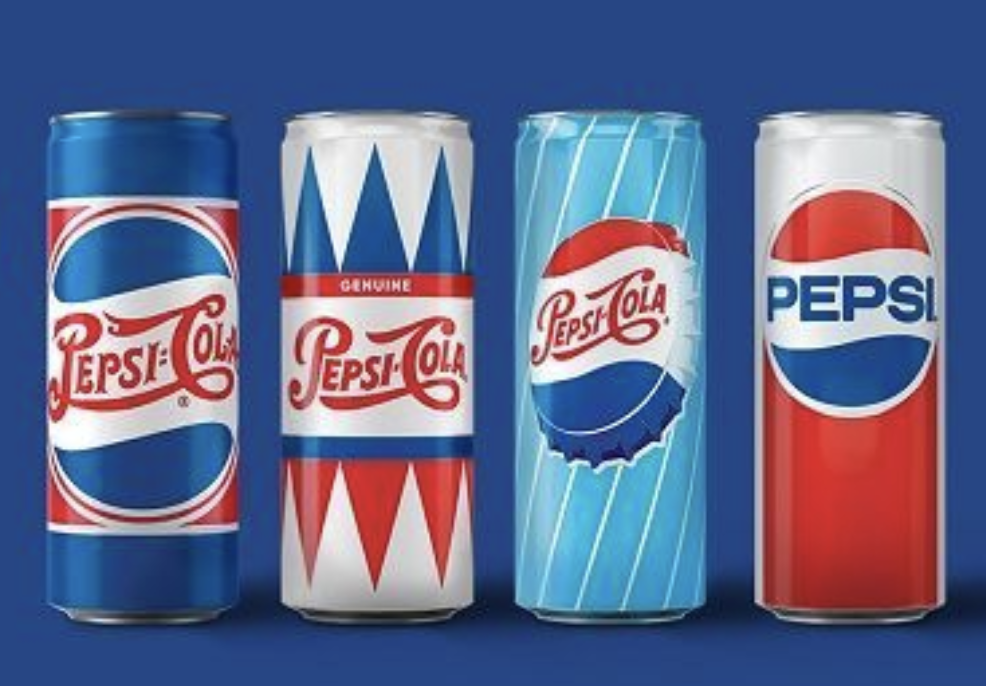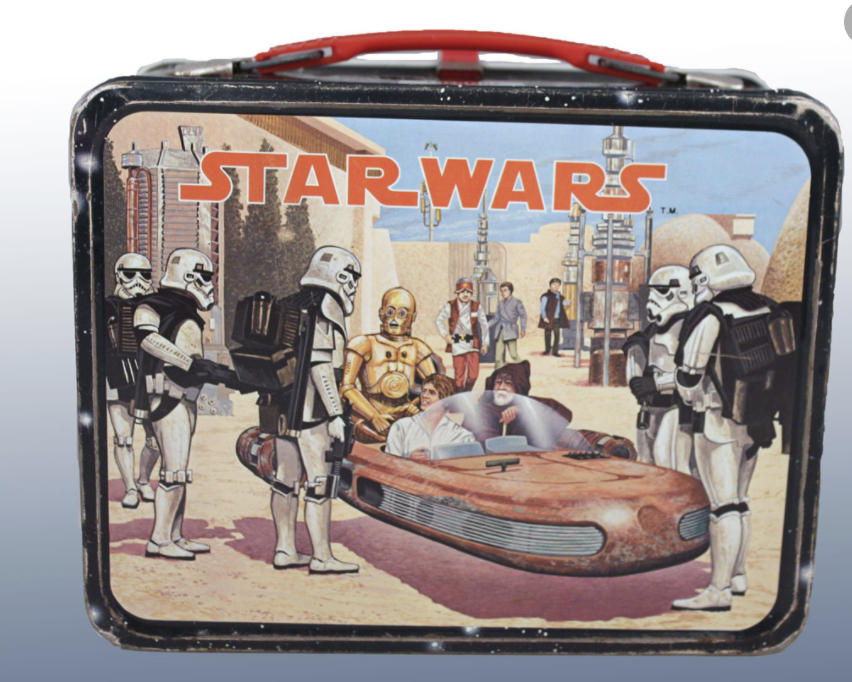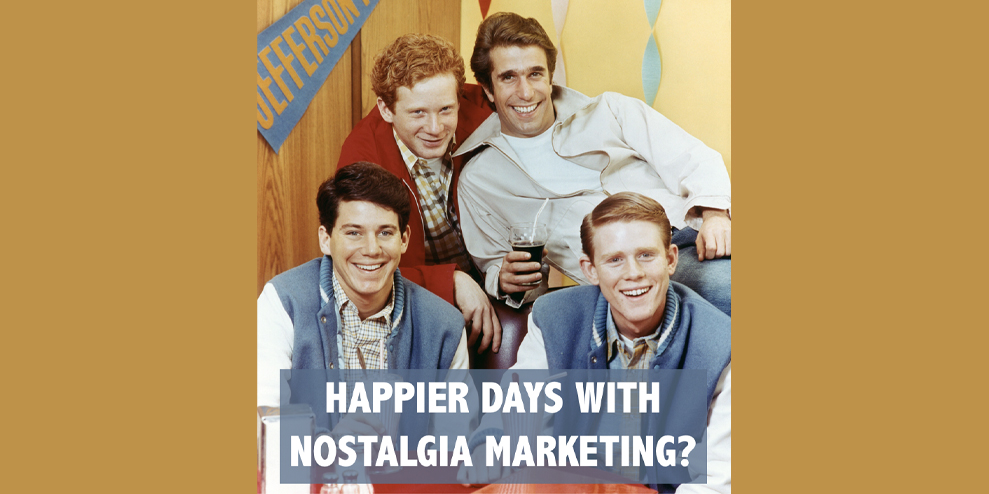On the surface, this seems like a very improbable scenario.
- Cobra Kai is follow-up to the 1984 movie Karate Kid and follows the story of the now middle-aged teen stars of that popular movie.
- The original movie appealed to children (and started a karate revolution) but this series with sexual references, drug use, and violence is more aimed at adults.
- The show is cheesy and definitely has a 1980s vibe in its music and aesthetic. It’s very predictable and really not that good.
How in the world is this show number one right now among thousands of highly-rated Netflix choices?
Today I’ll explain why and predict that this is just the beginning of a booming trend based on nostalgia.
Nostalgia marketing is next
First, let’s get on the same page about what I mean by nostalgia.
Nostalgia is a sentimental longing for the past, typically for a period or place with happy personal associations. An example of a company using nostalgia to evoke these positive emotions would be coming out with a “retro” edition of a product that evokes childhood memories.
An example: Last year, to commemorate its history, Pepsi reintroduced limited edition retro cans. The can images, which date back to the 1940s through the 1980s, were part of Pepsi’s “Celebrating Every Generation” campaign.

Recognizing something from your childhood may stir fond memories of what Pepsi meant to you and possibly spur a purchase to recapture that feeling.
Nostalgia marketing is not a new idea, but it’s not a common one, either. If you search for “nostalgia marketing” there isn’t much available in terms of case studies and best practices. But I think that is about to change. This is an idea whose time has come because of the intersection of two different trends.
Let’s dig in.
Trend One: The golden age of children’s media
Up until the 1980s — and the advent of cable programming — there was not a lot of direct marketing to children. I think back to the comic books I loved as a child. What was advertised in the back? How to build muscles, or grow rich selling Christmas cards door-to-door (which was one of my early entrepreneurial efforts!). I’m not too nostalgic about that!
Likewise, most of the early children’s television programming like Sesame Street or Mr. Rogers was on PBS — no ads. And at prime time, most kids prior to 1980 were consigned to watch whatever network programming mom and dad chose for the evening.
So let’s say that the “nostalgia stream” of childhood programming and products was very limited.
Until cable. Then … BOOM.
Cable TV introduced fully-dedicated channels for youth-oriented cartoons, movies, nature programs, and educational options. This increased exponentially with the beginning of the internet and exponentially again with smart devices when children could watch anything, any time, and anywhere. An entire media ecosystem was created for kids.
So, starting about 30 years ago, the golden age of children’s’ programming and youth-oriented product marketing began. The Millennials who grew up in this era have an incredible abundance of media-driven emotional connections compared to any other generation.
If nostalgia means longing for a happy childhood place or experience, you could say Millenials have been thoroughly prepped for it.
Trend Number Two: The world sucks
One of the trends that a lot of people are NOT talking about is the long-term emotional distress covering our world with a persistent vice grip.
Nearly every person, in every country, is suffering in some manner and grieving the loss of freedoms, traditions, lifestyles, and human connection.
My friend Martin Lindstrom predicts that the pandemic is conditioning an entire generation with symptoms of post-traumatic stress disorder. I agree with him.
This is a mega-trend with not-so-obvious implications for businesses and marketers. Except for this: The world is going to crave comfort from familiar products for a LONG TIME TO COME.
We can observe this trend emerging in the soaring sales of comfort foods such as ice cream, breakfast cereal, and macaroni and cheese.
The trend is showing up in this cottage core trend Brooke Sellas and I discussed on a Marketing Companion podcast episode and parodied on a video. People are re-discovering and celebrating the simple comforts and aesthetics of farm life, flowers, gingham dresses, and home-grown vegetables.
People are seeking comfort from the familiar and this value is extremely important for companies to begin to consider and process.
This adds up to nostalgia marketing

It’s easy to imagine how the intersection of these trends might mean that people are craving soothing, nurturing emotional connection to happier childhood experiences.
Great branding is about creating an emotional connection between your products/services and your audience.
I think we are about to enter a boom time for emotion-laden products like …
- Retro clothing
- Toys and games from the past
- Comfort foods associated with childhood
- A renaissance in 1980s and 1990s music, TV, and movies
- Any sort of merchandise and antiques from those periods — lunch boxes, magazines, trading cards, posters, etc.
I also believe that we will see familiar imagery, fonts, and design trends from past decades come back for a generation seeking the comfort of a happier time.
And this, ladies and gentlemen explains why a rather dumb show like Cobra Kai is at the top of the Netflix charts right now. We want to forget about the sucky world and cheer for the Karate Kid one more time.
As I said, nostalgia marketing is not a new idea, but it’s about to become a HOT idea. Keep your eyes open for product launches, re-launches, re-marketing, and design aesthetics that evoke happy childhood memories. I’ll leave you with this:

Now, I am going to go spend time looking over my old Pittsburgh Pirates yearbooks I collected as a kid. I sort of need that comfort right now.
This article first appeared in www.businessesgrow.com
Seeking to build and grow your brand using the force of consumer insight, strategic foresight, creative disruption and technology prowess? Talk to us at +971 50 6254340 or mail: engage@groupisd.com or visit www.groupisd.com/story




